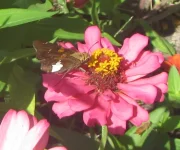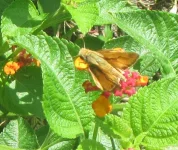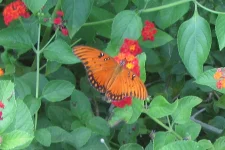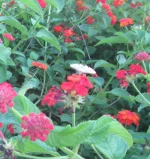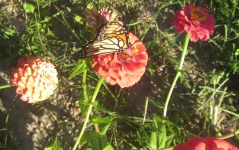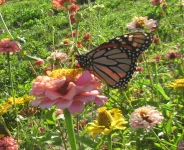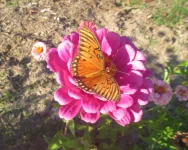Meadowlark
Well-known member
- Hardiness zone
- 9a
With the summer season beginning to fade I'm expecting to see some "new" varieties come through. Today, several of these Dorantes Longtail (Urbanus dorantes) were present on the lantana bushes. Southeast Texas is about the northernmost this one ranges as it is prominent in Argentina, Central America, Mexico etc. You can see in the photo below why it is called "longtail".
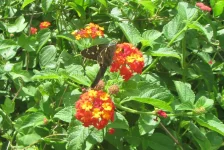
Meanwhile my milkweed garden is coming along nicely. The goal is to attract possibly some Monarchs as they migrate south through Texas to Mexico for the winter. In the foreground the Swamp milkweed is shown and next over from it the Orange Butterfly milkweed, with the Calico Aster in the background double protected from rabbits which love to graze on it. These plants were started back in July and have weathered the hottest part of the year. Soon I will plant seeds of several more milkweed varieties to get established for next spring.


Meanwhile my milkweed garden is coming along nicely. The goal is to attract possibly some Monarchs as they migrate south through Texas to Mexico for the winter. In the foreground the Swamp milkweed is shown and next over from it the Orange Butterfly milkweed, with the Calico Aster in the background double protected from rabbits which love to graze on it. These plants were started back in July and have weathered the hottest part of the year. Soon I will plant seeds of several more milkweed varieties to get established for next spring.

Attachments
Last edited:


